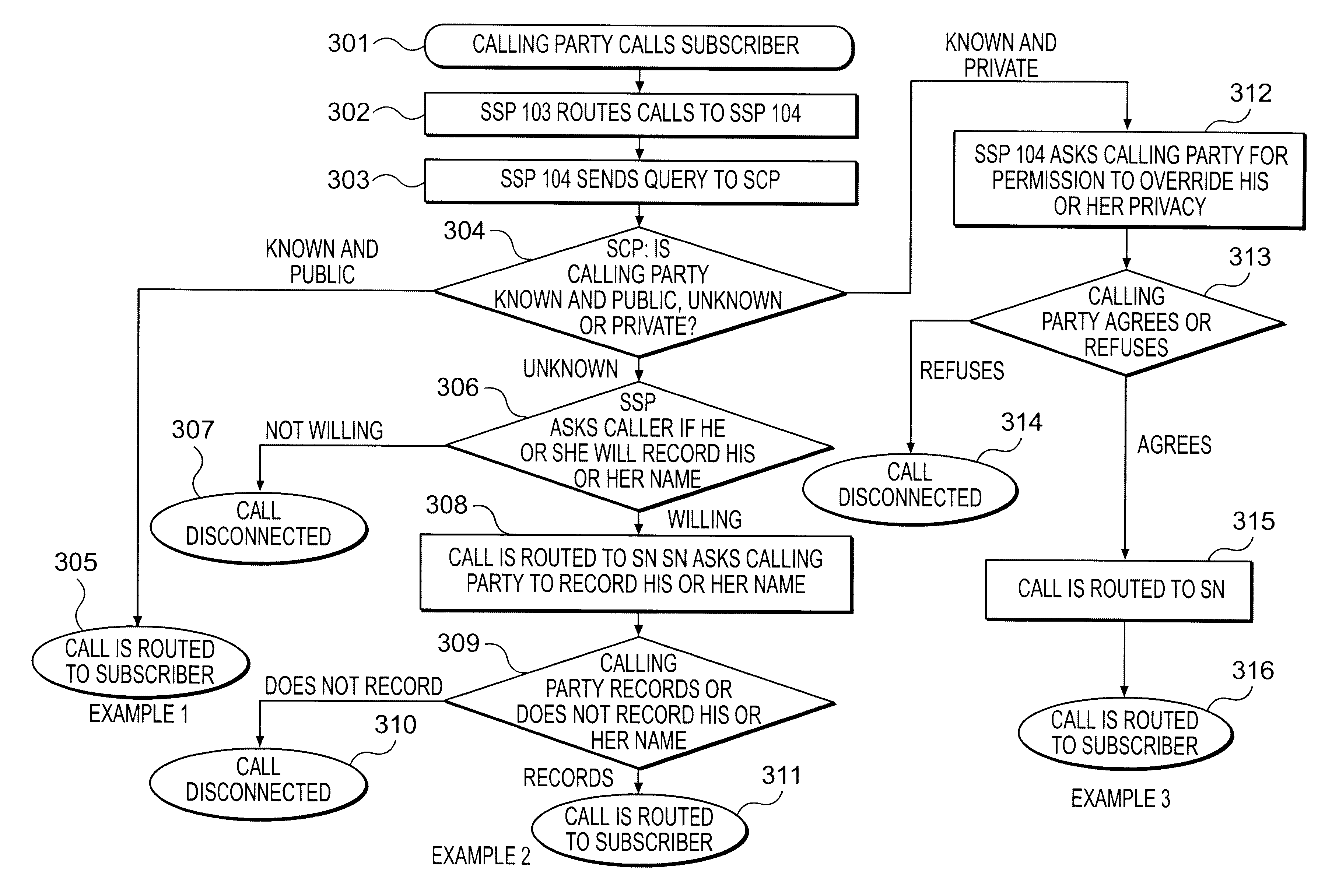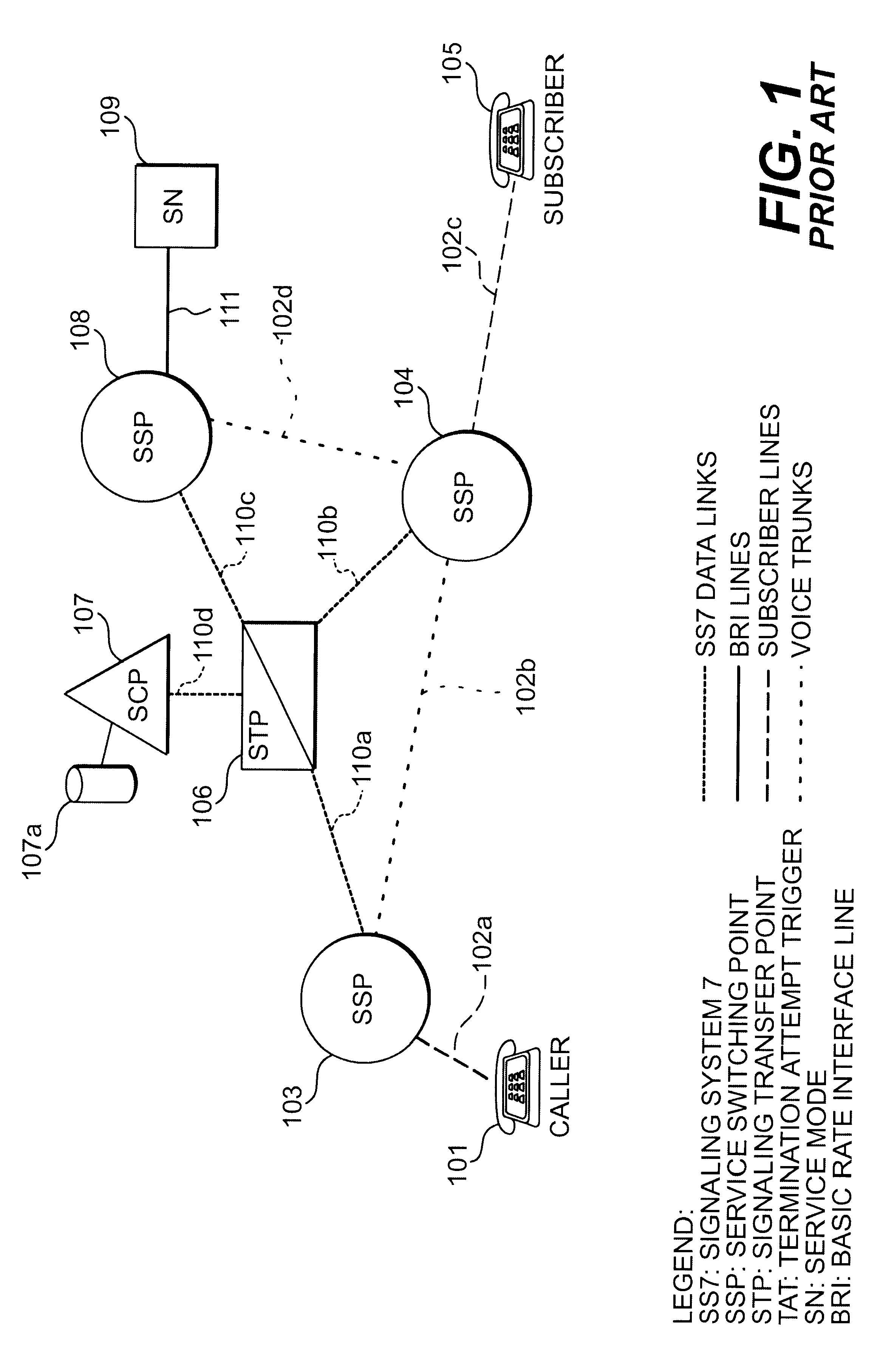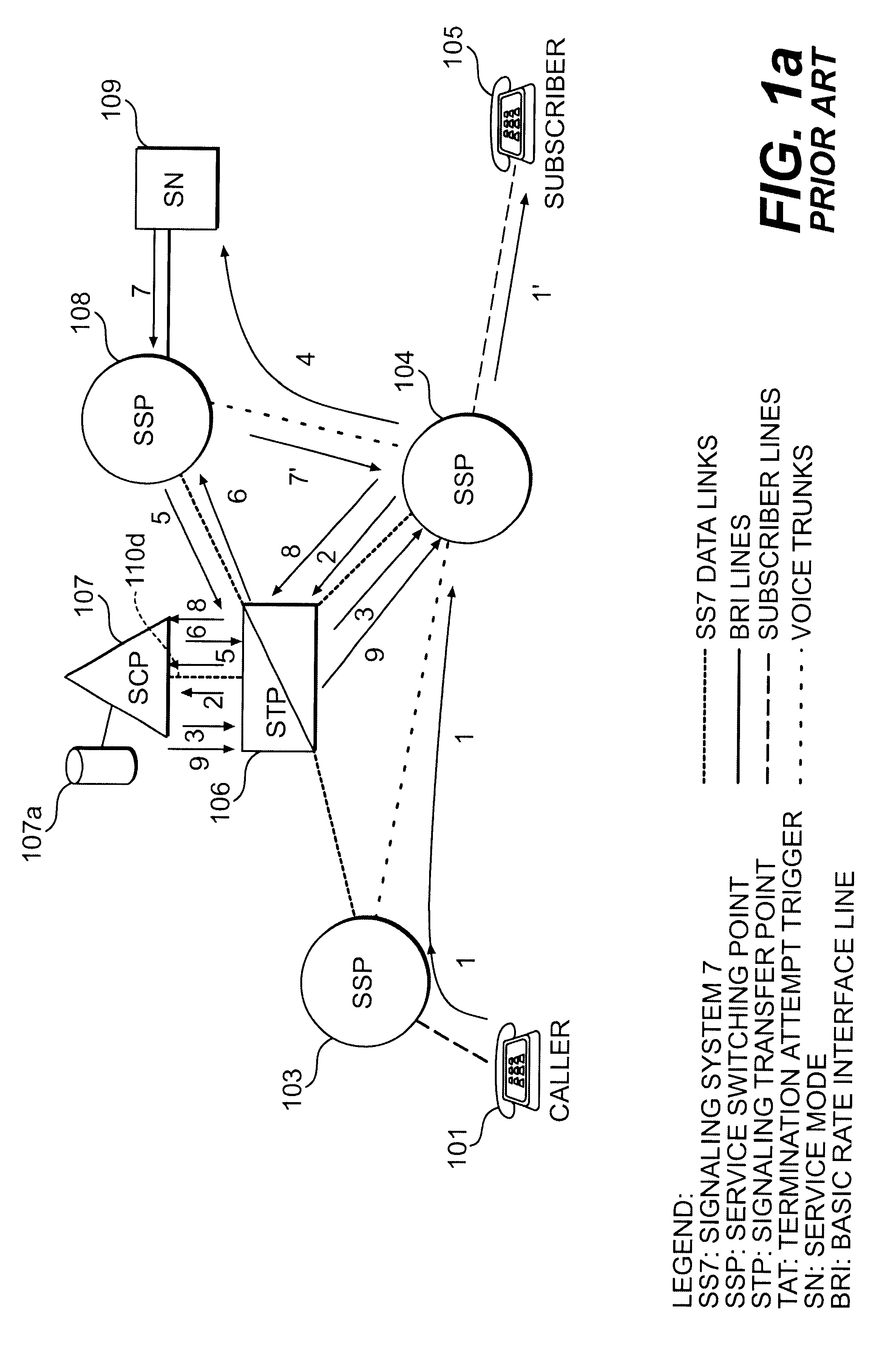System and method for completing private or unknown calls made to subscribers to a privacy screening service
a privacy screening and private or unknown technology, applied in the field of termination of telephone calls, can solve the problems of system not being able to authorize the termination of calls without the permission of the caller, and the system cannot terminate calls
- Summary
- Abstract
- Description
- Claims
- Application Information
AI Technical Summary
Problems solved by technology
Method used
Image
Examples
example 2
Calling Party is Unknown
The call flow for an unknown calling party (e.g., because the call is from outside the telephone network) is shown in FIGS. 5-5b. Steps 501-503 are similar to steps 401-403 described above with respect to FIG. 3. In step 504, SCP 107 checks the calling party field, determines that the calling party is unknown, and sends a Send_to_Resource message to SSP 104 (response 3).
There are two alternatives for proceeding at this point. The first alternative saves network resources, by not forwarding the call to the SN unless the caller agrees ahead of time to record his or her name so that it may be played for the subscriber. This alternative is shown schematically in the flowcharts of FIGS. 5-5b (and is the preferred embodiment described in the Summary of the Invention section). In the second alternative the call is forwarded to the SN, at which time the caller can decide whether or not to record his or her name. This second alternative may be considered less burdenso...
example 3
Calling Party is Private
The call flows when the calling party number is private are shown in FIGS. 6-6b. These call flows do not depend on whether the subscriber's number is private or public. Steps 601-603 are similar to steps 401-403 described above with respect to FIG. 4. In step 604, SCP 107 checks the calling party presentation indicator in the calling party ID field and determines that the calling party number is private.
There are two alternatives for proceeding at this point. The first alternative saves network resources, by not forwarding the call to the SN unless the caller agrees ahead of time to have his or her privacy overriden. This alternative is shown schematically in the flowcharts of FIGS. 6-6b (and is the preferred embodiment described in the Summary of the Invention section). In the second alternative the call is forwarded to the SN, at which time the caller can decide whether or not to allow his or her privacy to be overriden. This second alternative may be consi...
examples 1-3
have been written, for the purposes of illustration, with three separate SSPs (SSP 103, SSP 104 and SSP 108). However, in many cases, the same SSP may serve both the calling party and the subscriber (in which case SSP 103 and SSP 104 would be the same SSP), or the same SSP may serve the calling party and the SN (in which case SSP 103 and SSP 108 would be the same SSP), or the same SSP may serve the subscriber and the SN (in which case SSP 104 and SSP 108 would be the same SSP). Similarly, although the present invention is illustrated and described herein with only one SCP and one STP, in general more than one SCP and one STP may carry out the functions described herein for the SCP and STP shown in the Figures. Furthermore, more than one SN may be used to carry out the functions of SN 109.
The foregoing disclosure of embodiments of the present invention has been presented for purposes of illustration and description. It is not exhaustive or intended to limit the invention to the preci...
PUM
 Login to View More
Login to View More Abstract
Description
Claims
Application Information
 Login to View More
Login to View More - R&D
- Intellectual Property
- Life Sciences
- Materials
- Tech Scout
- Unparalleled Data Quality
- Higher Quality Content
- 60% Fewer Hallucinations
Browse by: Latest US Patents, China's latest patents, Technical Efficacy Thesaurus, Application Domain, Technology Topic, Popular Technical Reports.
© 2025 PatSnap. All rights reserved.Legal|Privacy policy|Modern Slavery Act Transparency Statement|Sitemap|About US| Contact US: help@patsnap.com



